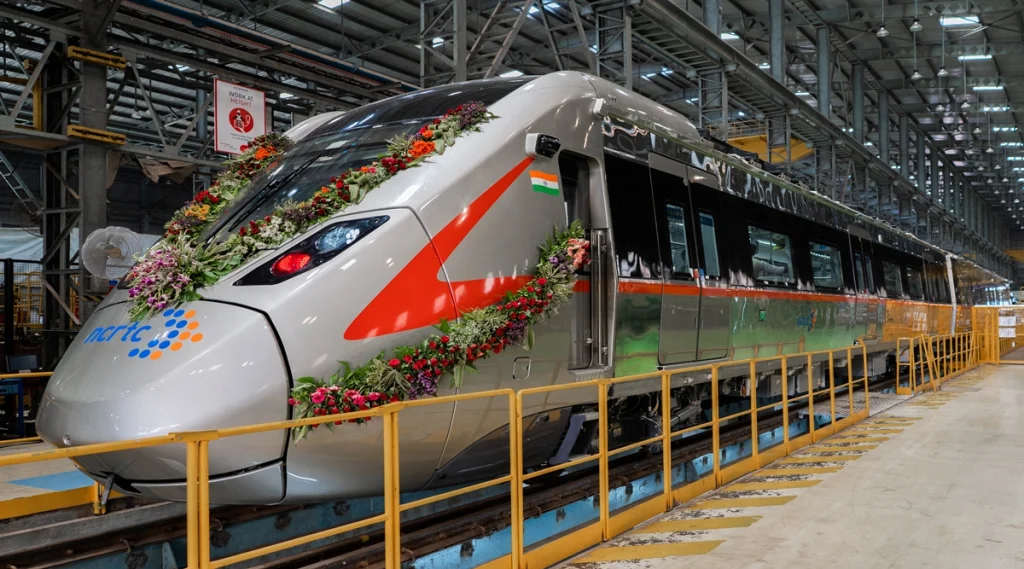Context:
Prime Minister Narendra Modi inaugurated an additional 17-km-long stretch between Duhai and Modi Nagar North of the Delhi-Meerut RRTS corridor.
Key highlights
• This extension includes three stations: Muradnagar, Modi Nagar South, and Modi Nagar North.
• With this additional section, the Namo Bharat services will be available on 34 kms of the Delhi-Meerut RRTS corridor, incorporating eight stations from Sahibabad to Modinagar North.
- The earlier 17 km priority section comprising five stations between Sahibabad and Duhai was launched for passenger operations by PM Modi in October 2023.
• The RRTS project was initiated with the laying of the foundation stone for India’s inaugural RRTS corridor, connecting Delhi to Meerut, in March 2019.
• Each Namo Bharat train consists of six coaches, with 72 seats in a standard coach and 62 seats in the premium coach.
- One coach adjacent to the premium coach is reserved for women, and some seats in each coach are reserved for women, differently-abled individuals, and senior citizens.
The Regional Rapid Transit System (RRTS)
It is a new mode of public transportation in India that is designed to provide high-speed, high-capacity commuter services between regional nodes. The first RRTS line is currently under construction between Delhi and Meerut, with a planned operational speed of 160 km/h (99 mph). This will make it the fastest rapid transit train in India.
The RRTS is different from conventional railways in that it will provide reliable, high-frequency, point-to-point regional travel at high speed along a dedicated pathway. It is also different from metros in that it caters to passengers looking to travel relatively longer distances with fewer stops and at higher speeds.
A total of eight RRTS corridors have been identified to be developed in Delhi NCR, out of which three corridors have been prioritised to be implemented in Phase-I.
These three corridors are –
- Delhi – Ghaziabad – Meerut Corridor (82 km);
- Delhi – Gurugram – Alwar Corridor (164 kms); and
- Delhi – Panipat Corridor (103 km).
The RRTS operates at a design speed of 180 kmph and an operational speed of 160 kmph. It is expected to significantly reduce travel time between Delhi and Meerut to less than an hour along the 82-km-long Delhi-Ghaziabad-Meerut corridor.


